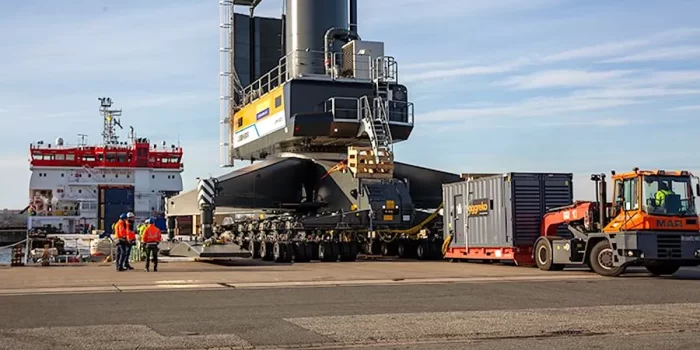Not long ago at the Hartel Terminal in Maasvlakte, the Netherlands, an event of truly epic proportions unfolded as Marcor Stevedoring greeted the arrival of their first Liebherr LHM 800e mobile electric harbor crane. This monster machine is referred to by its makers, Liebherr, as ‘the most powerful mobile harbor crane on the planet’ and for good reason: it’s capable of hoisting over 300 tons in a single lift and shifting in excess of 2300 tons an hour using nothing less than state-of-the-art precision controls.
One of the remarkable aspects of the Liebherr LHM 800e is that it not only presents as a source of strength but also as a vehicle for port carbonization. This crane’s full electric operation makes it a perfect fit with Marcor’s bulk, bagged, and containerized stevedoring activities. With a reach of 64 meters and a peak ability of over 2000 tons per hour, this crane is next level in terms of performance and possibilities.

The activities of Marcor Stevedoring at the Hartel Terminal are essential because they provide as a logistical link between the port’s dock and the dry bulk cargo storage buildings. This is particularly significant since the demand for minerals and metals required for clean energy technologies is driving a manufacturing boom in the European mining raw materials sector.
The Liebherr LHM 800e is being introduced at a crucial time when European nations are stepping up their efforts to drastically cut greenhouse gas emissions. By lowering fuel consumption and emissions, the crane not only strengthens Marcor’s competitive advantage in the dry bulk market but also advances the company’s sustainability objectives.
Handling approximately six million tons of loose, bagged, and containerized bulk cargo annually, Marcor Stevedoring’s adoption of the Liebherr LHM 800e underscores a commitment to sustainability and innovation. As more European countries strive for carbon neutrality, this massive Liebherr mobile electric crane serves as a beacon of progress towards greener, more efficient port operations.


